
Under Water Photography with a Compact Digital Cameraby
Snapshot of kayakers off the West Coast taken with the Pentax Optio W30 Camera - these cameras are also suitable If you are heading to the beach this summer, boating or fishing you may want to bring along a waterproof camera. There are currently several compact cameras that are completely waterproof and they can each be purchased for under $500. The quality of the images is not up to what you get with a DSLR, but good enough to make an 8 x 10 inch print and display on the web. There are plenty of online reviews that compare the different underwater cameras for e.g. see www.dpreview.com.
Photograph of Green Surf Anemones, Purple Star and Hydroid I have used the Pentax Optio W30 camera with produces 7.1 MP images for photographing in tide pools and from a kayak on the West coast. In macro mode I can get the front lens within a centimeter of my subject allowing me to take close-ups. The camera is small and easily fits in my life jacket pocket and has a wide angle zoom lens that produces satisfactory photos above water as well. Considering its price, around $300, I believe it's a good value. However, there are some things I don't like and would like to see improved. There is a distinct lag between pressing the button and the camera taking the picture. Also autofocus is slow and there isn't any vibration reduction in the W30 model. Furthermore, the body has a slick, shinny smooth surface that is hard to get a good grip on especially when your hands are wet. I would like to see some rubber on the body to prevent it from slipping out of my hands. There are rubber skins you can purchase to protect and improve the grip of the camera, but this is just poor design. As far as I know none of the current compact digital cameras shoots RAW files which limits how much I can enlarge and manipulate the images in Photoshop afterwards. Also be sure you have at least one spare battery as the current battery does not last long and you can expect to need to change it after about 100-150 shots. The latest Pentax Optio WG-1 seems to address some of my concerns and includes 14 megapixels, a digital microscope mode with LED lens lighting, 720p HD video, 16:9 aspect ratio and Digital Shake Reduction. Pentax also put some rubber around the camera for a better grip. The OPTIO W30 has 4:3 aspect ratio which looks too "square" to me so most of the pictures in this article have been cropped to provide a more panoramic feel. Now if one of the manufacturers of underwater compact cameras would add the ability to take RAW files, I will buy it!
Some cameras also offer underwater mode where they alter the white balance to correct for the overall
Miray demonstrates how she photographs invertebrates attached to a dock at Shearwater, BC. The best results occur
By dipping the camera into the water and watching the view screen it is possible to take photographs that
Plumose Anemone on side of Dock showing open and closed versions.
Giant Plumose Anemone and tube worms growing on the shide of the dock in Shearwater, BC.
Anemone on side of Dock surrounded by smaller tube worms.
Bright orange coloured Anemone growing on dockside, Shearwater, BC.
Giant Plumose Anemone
Close-up of tentacles on Green Surf Anemone in tide pool. I held the camera about 1 cm from the subject and
Sunflower star in tide pool, they may have up to 26 arms and 15.000 tube feet.
Lion's Mane Jelly fish - this jelly fish has stinging tentacles that feel like a wasp sting and it grows up to 2 m in diameter. Photographed from the side of my kayak while paddling on the West Coast.
Moon Jelly - spawning aggregations are often found in sheltered bays, photographed from the back of our boat.
Short film of Moon Jellies made from the back of our boat, the Mothership III , using the Pentax Optio W30. The main challenge when taking movies underwater with the Pentax Optio is focussing. The movie above was made by simply holding the camera under the surface of the water with my hand. In some instances I set the camera to manual focus and increased the ISO speed, hence the grainy appearance of the video. While the results aren't spectacular the camera does a pretty good job in shallow water and should also be good for snorkling. In Alberta,I have used the camera to photograph trout with a friend of mine, Frank Wood (see Frank's article on Fly Fishing photography) see below.
Cutthroat Trout from the Upper Oldman River in Alberta - Pentax Optio W30.
When photographing with the Pentax Optio, or any underwater camera, don't forget to wipe the lens clean after removing it from the water or you will have water drops on your images taken out of the water. Holding the camera steady in the water and focusing on Links to Additional Resources
[ Top ] |
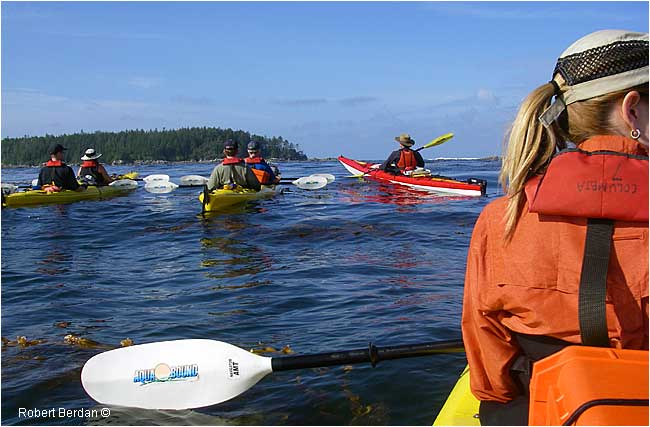






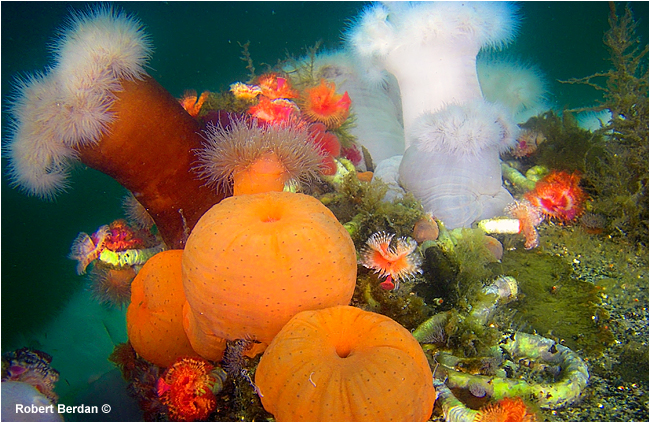




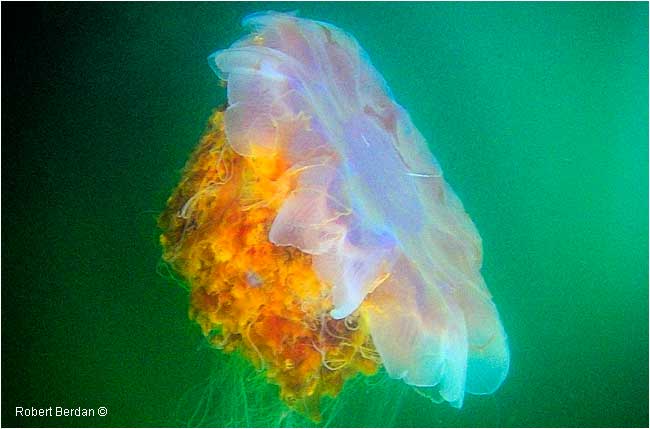
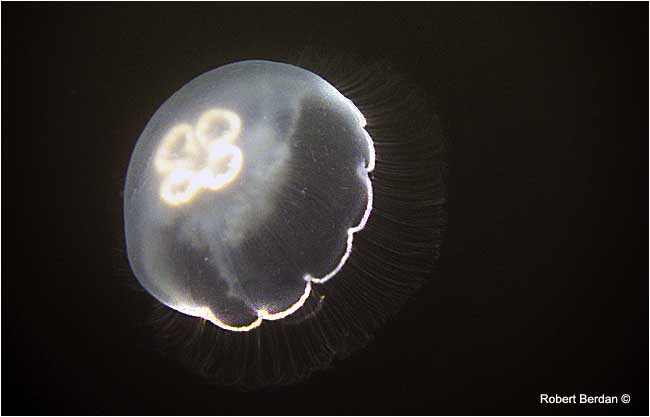
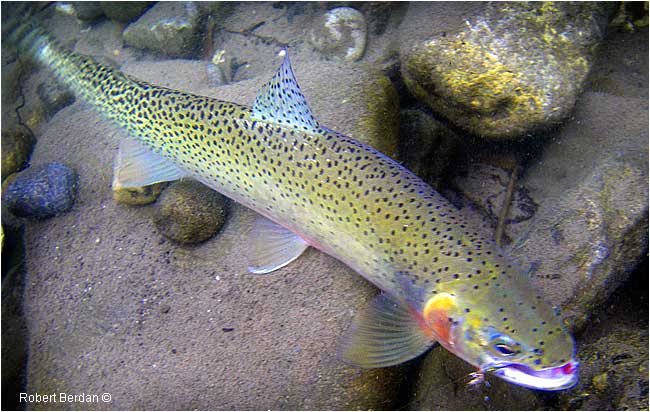

 your subject is the main challenge. I have tried using the flash underwater, but without a lot of success. I also tried attaching the camera to my monopod and inserting it into rivers with swimming salmon using my self timer, but as soon as the salmon see the camera they swam away. The main advantage the Optio camera offers is that when photographing tide pools I can insert the camera into the pool and avoid reflections and overall loss of contrast. It is possible to use waterproof plastic housings to put your DSLR camera into the water, but these housings can cost more then the DSLR camera and I found they often fog up on the inside and are bulky. There are currently at least seven different waterproof digital compact cameras on the market -
your subject is the main challenge. I have tried using the flash underwater, but without a lot of success. I also tried attaching the camera to my monopod and inserting it into rivers with swimming salmon using my self timer, but as soon as the salmon see the camera they swam away. The main advantage the Optio camera offers is that when photographing tide pools I can insert the camera into the pool and avoid reflections and overall loss of contrast. It is possible to use waterproof plastic housings to put your DSLR camera into the water, but these housings can cost more then the DSLR camera and I found they often fog up on the inside and are bulky. There are currently at least seven different waterproof digital compact cameras on the market -